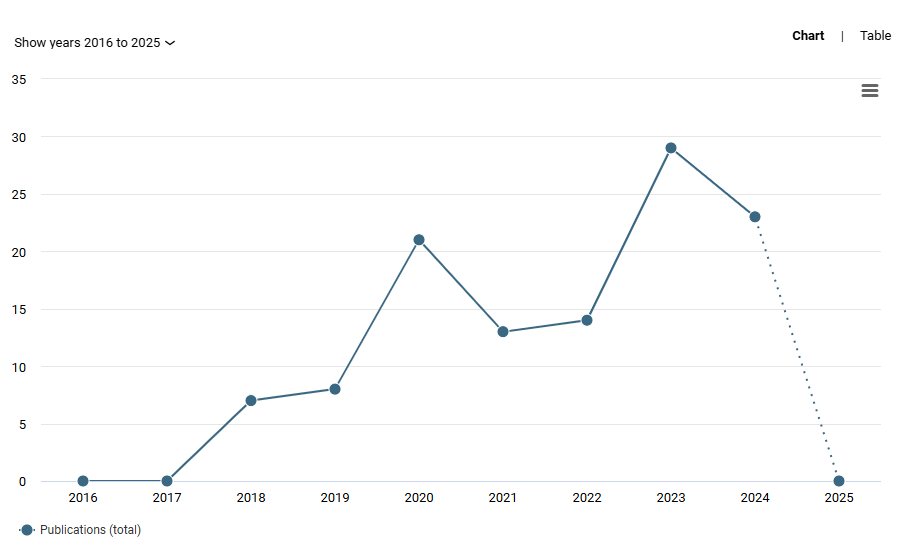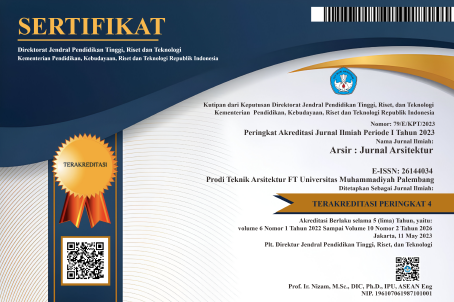The Impact of Inside Balcony Type Configuration on Cooling Energy Performance in Vertical Housing Buildings in Indonesia
DOI:
https://doi.org/10.32502/arsir.v9i1.287Keywords:
cooling energy, shape factor, simulation, vertical housingAbstract
Buildings in major Indonesian cities are projected to be dominated by vertical housing such as public housing, which is anticipated to make up most building stock. Buildings contribute to around 40% of global primary energy consumption and account for one-third of CO2 emissions, both of which can significantly impact global warming. One consequence of this is the rise in ambient temperatures, which drives the increased use of active cooling solutions like air conditioning (AC) to counter thermal discomfort caused by global warming. Post-COVID-19, the shift toward more indoor activities has further fuelled the demand for cooling. One solution to reduce this demand is through passive design, utilizing economical shading elements on the building envelope. Building facades—covering the front, sides, and rear—interact directly with the external environment, and this study focuses on the configuration of recessed balconies. The study uses simulation methods with software such as Rhinoceros and Grasshopper, employing the Honeybee and Ladybug plugins to run EnergyPlus simulations. Simulation results show that recessed U-shaped balconies improve cooling energy performance as their depth increases. This improvement is attributed to the higher conductivity of deeper walls at night. The use of recessed balcony types can reduce cooling energy for units with recessed balcony placements, without altering room layouts.
Downloads
Published
How to Cite
Issue
Section
License
Copyright (c) 2025 Ade Nurma Prasetyo, Agus Hariyadi

This work is licensed under a Creative Commons Attribution-ShareAlike 4.0 International License.
Arsir: Jurnal Arsitektur (AJA) have CC-BY-SA or an equivalent license as the optimal license for the publication, distribution, use, and reuse of scholarly work.
Authors who publish Arsir: Jurnal Arsitektur (AJA) agree to the following terms: Authors retain copyright and grant the Arsir: Jurnal Arsitektur (AJA) right of first publication with the work simultaneously licensed under a Creative Commons Attribution License (CC BY-SA 4.0) that allows others to share (copy and redistribute the material in any medium or format) and adapt (remix, transform, and build upon the material) the work for any purpose, even commercially, with an acknowledgement of the work's authorship and initial publication in Arsir: Jurnal Arsitektur (AJA). Authors are able to enter into separate, additional contractual arrangements for the non-exclusive distribution of the journal's published version of the work (e.g., post it to an institutional repository or publish it in a book), with an acknowledgement of its initial publication in Arsir: Jurnal Arsitektur (AJA). Authors are permitted and encouraged to post their work online (e.g., in institutional repositories or on their website) prior to and during the submission process, as it can lead to productive exchanges as well as earlier and greater citation of published work (see The Effect of Open Access).
![]()
Work is distributed below This work is licensed under a Creative Commons Attribution-ShareAlike 4.0 International License.










